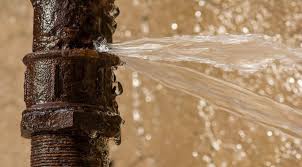Foundation water leaks can be a homeowner’s worst nightmare. Not only do they compromise the structural integrity of your home, but they can also lead to mold growth, poor indoor air quality, and costly repairs. If you’re dealing with a foundation water leak, it’s crucial to address the issue promptly and effectively. This guide will walk you through everything you need to know about foundation water leak repair, from identifying the problem to choosing the right solution.First, let’s explore the common causes of foundation water leaks. Understanding the root cause is essential for effective repair and prevention.
- Poor Drainage: Improper grading around your home can direct water toward the foundation instead of away from it.
- Cracked Foundation: Over time, foundations can develop cracks due to settling, soil pressure, or freeze-thaw cycles.
- Faulty Gutters and Downspouts: Clogged or misaligned gutters can cause water to pool near the foundation.
- Hydrostatic Pressure: Water-saturated soil can exert pressure on the foundation, forcing water through cracks or porous materials.
Now that you know what might be causing your foundation water leak, let’s discuss how to identify the problem. Early detection can save you thousands of dollars in repairs.
- Inspect Your Basement or Crawl Space: Look for signs of moisture, such as damp walls, puddles, or a musty odor.
- Check for Cracks: Examine your foundation walls and floors for visible cracks, no matter how small.
- Monitor Water Bills: A sudden increase in your water bill could indicate an underground leak.
- Look for Mold or Mildew: These fungi thrive in damp environments and are a clear sign of water intrusion.
Once you’ve identified a foundation water leak, it’s time to consider your repair options. The best solution depends on the severity and cause of the leak.
Interior Sealants and Coatings: For minor leaks, applying a waterproof sealant to the interior walls can be an effective short-term solution. However, this doesn’t address the underlying issue and may not be a permanent fix.Exterior Waterproofing: This involves excavating around the foundation, applying a waterproof membrane, and installing a drainage system. While more expensive, it’s one of the most effective long-term solutions.French Drains: A French drain is a trench filled with gravel and a perforated pipe that redirects water away from the foundation. This is particularly useful for homes with poor drainage.Sump Pump Installation: If your home is prone to flooding, a sump pump can help remove excess water from your basement or crawl space.Preventing future foundation water leaks is just as important as repairing existing ones. Here are some proactive steps you can take:
- Maintain Your Gutters: Clean them regularly and ensure downspouts direct water at least 6 feet away from the foundation.
- Improve Landscaping: Grade your yard so that it slopes away from your home, and consider using plants that absorb excess water.
- Install a Drainage System: A perimeter drain or French drain can help manage groundwater and prevent leaks.
- Monitor Soil Moisture: Use a moisture meter to keep an eye on the soil around your foundation, especially during wet seasons.
In conclusion, foundation water leak repair is a critical aspect of home maintenance that shouldn’t be ignored. By understanding the causes, identifying the signs, and choosing the right repair method, you can protect your home from costly damage. Remember, when in doubt, consult a professional to ensure the job is done correctly and safely.

